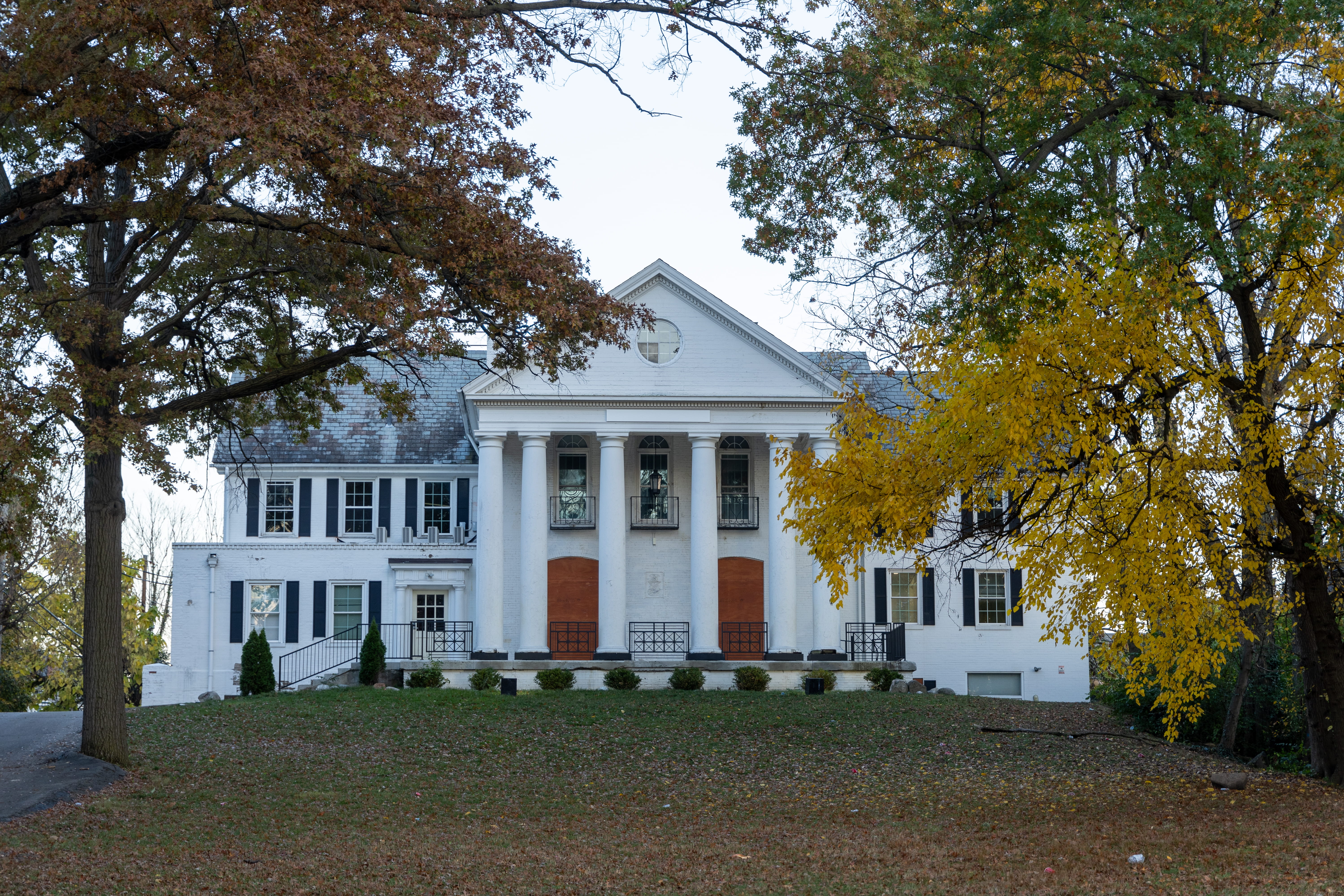
Neil Mansion, located at 1842 Indianola Ave., is the largest residential landmark in the Iuka Ravine district. Credit: Caleb Blake | Photo Editor
Students living off campus often gravitate toward older houses with character, but they may not know the rich lore associated with their off-campus neighborhood.
Doreen Uhas-Sauer, president of the University Area Commission and off-campus resident since the 1960s, said a few of the oldest standout off-campus neighborhoods include Iuka Ravine, Northwood Park and Dennison Place.
“In an older house, you get mantles, and you get wonderful woodwork, and you get certainly all of the quirkiness and charm of an older house,” Uhas-Sauer said. “On the other hand, you can also inherit some of the natural aging [factors of an older house].”
Platted in 1905, Uhas-Sauer said Iuka Ravine was one of the last places not developed by a company when it was sold by the Neil Estate.
“People put their own houses in [Iuka Ravine], which is why the houses are said to grow organically,” Uhas-Sauer said.
Uhas-Sauer said the neighborhood’s architects took advantage of the natural terrain and landscaping, paving curvilinear roadways near forests and trees. According to the Statement of Significance for Iuka Ravine Marker, the neighborhood became the first street in Columbus to break the grid pattern.
The statement said the neighborhood’s largest residential landmark is the Neil Mansion at 1842 Indianola Ave. The building, which was home to the Kappa Sigma Fraternity chapter at Ohio State since 1918 prior to the chapter’s closing in 2020, first looked out to what was once Vance Farms.
The mansion is said to have a passageway entry leading to a tunnel underneath the house where fugitive slaves were hidden, according to the statement. The tunnel has mostly collapsed, but a few yards are still accessible from the building’s basement.
A Council of Historic Neighborhoods brochure said Northwood Park, an off-campus neighborhood where many students live, was built between 1905 and 1920, with an outlier built in 1930. The area, including Northwood and Oakland avenues, consists of six blocks of original housing, which has been kept intact.
Uhas-Sauer said architectural styles can trace the passage of time, and according to a Council of Historic Neighborhoods brochure, many architectural styles can be seen throughout Northwood Park, although American FourSquare — characterized by a box-like, 2.5-story form, often with a central dormer window — is the most common.
“[Architectural styles] tell us about, really, both the exterior styles that were popular in certain areas, but they also tell us about the socioeconomic status of the people who were moving in, or the change in population,” Uhas-Sauer said.
Students living on Northwood or Oakland avenues should also know the neighborhood created a long-lived reputation for gardening in 1907, according to a Northwood Park Garden Club brochure. The notoriety started when the streets were deemed “Beautiful Northwood Park,” and the hype escalated between 1912 and 1916 when two garden clubs for each Northwood and Oakland avenues received the top two “Most Beautiful Street” awards.
Dennison Place, a neighborhood south of Ohio State and also known as “The Circles,” is known for its circular islands, and was platted by Ann Dennison in 1888, according to a Council of Historic Neighborhoods brochure.
“It’s interesting because the houses in Dennison Place and houses around South Campus are actually fairly old because the university actually started around 11th Avenue, not 15th,” Uhas-Sauer said. “And so, the older, original houses — many of which were beautiful older homes — have been lost.”
According to the same brochure, over 90 percent of homes in Dennison Place were renovated in the last 30 years, and the community now consists of 400 homes filled with some Ohio State faculty, five churches, an elementary school and a range of restaurants and retail shops.
While preserving the historic housing throughout the university area, ongoing renovations are inevitable, but Uhas-Sauer said Columbus handles the communities’ history more sensitively than in the 1970s.
“Older neighborhoods and new development can exist near each other and really be complimentary,” Uhas-Sauer said.
Because large institutions and nearby neighborhoods mutually affect each other, Uhas-Sauer said the university area is different from other areas around and understanding, realizing and acting like that will improve the area.
“I think they have to look holistically at keeping what is essentially an intergenerational community of various socioeconomic and diverse groups,” Uhas-Sauer said.


